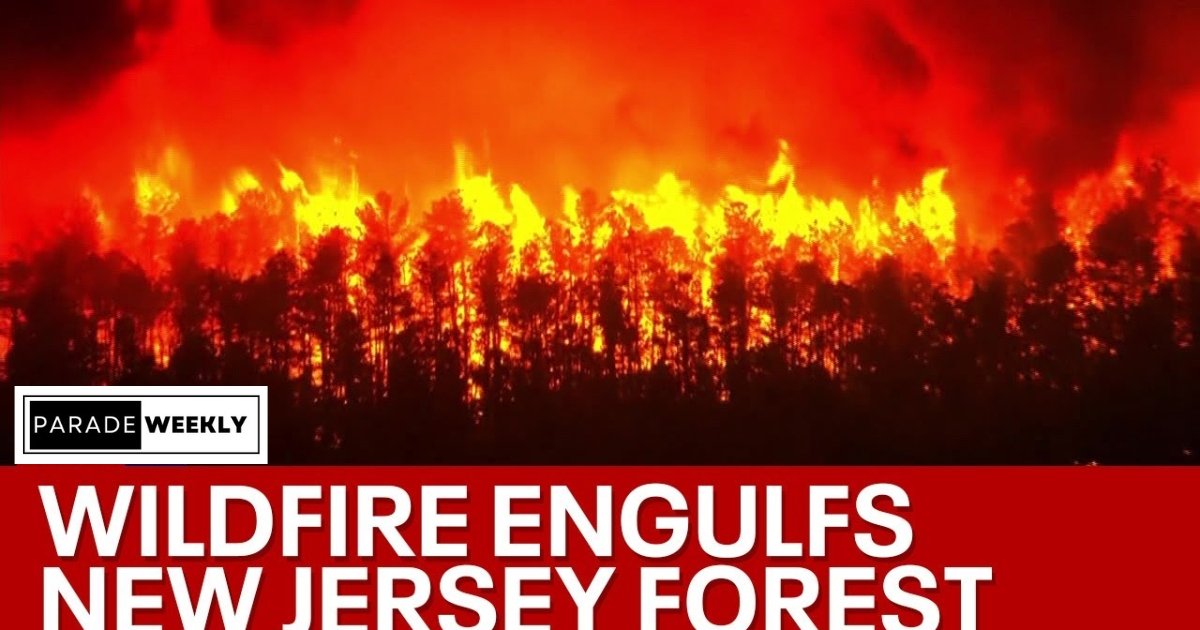Known for its expansive forests, tranquil scenery, and Six Flags amusement park, Jackson, New Jersey, was unprepared for the horror of a destructive wildfire. The Jackson NJ Wildfire that ravaged Jackson in 2025 served as a sobering reminder in an area that is not often known for catastrophic fires. Let us examine the actual events, their causes, and the post-event reconstruction efforts of the town and its residents.
Understanding Jackson NJ Wildfire in New Jersey
The Geography of Fire – Why Jackson NJ Wildfire is Vulnerable
You might not think of New Jersey when you hear “wildfire,” but the Garden State has more forest land than you might guess. Jackson sits right in the Pine Barrens, an ecosystem full of pitch pine and scrub oak—trees that burn hot and fast. Throw in dry conditions, wind, and human activity, and you’ve got a recipe for disaster.
Forests, Climate, and Fuel: A Perfect Storm
Every year, leaf litter and pine needles build up, creating a thick blanket of natural fuel on the forest floor. Combine that with a warming climate—longer dry spells and less predictable rain—and fires that once stayed small now have the chance to explode.
Historical Wildfires in the Region
Wildfires aren’t new to New Jersey, but the frequency and intensity have been escalating. In the last decade alone, the state has experienced several notable blazes, though none quite on the scale of the Jackson incident.
The 2025 Jackson NJ Wildfire– What Happened?
Timeline of the Fire Outbreak
The blaze began on a windy April afternoon, sparked by what officials believe was an illegal backyard burn. Within hours, flames had jumped firebreaks, forcing rapid evacuations.
Causes Behind the Fire
While human negligence was the trigger, the underlying causes were deeper: dry underbrush, gusty winds, and unusually warm temperatures. It was a ticking time bomb.
Spread Pattern and Affected Areas
The fire moved unpredictably, driven by changing winds. Homes near Jackson Mills and along County Line Road bore the brunt. In total, over 4,000 acres burned.
Residential Zones at Risk
Entire neighborhoods were under mandatory evacuation. Some houses were spared by mere feet, while others weren’t so lucky.
Wildlife and Natural Habitat Impact
The Pine Barrens is home to rare species like the Pine Barrens tree frog and northern pine snake—many lost their habitats overnight.
Emergency Response and Firefighting Efforts
Local and State-Level Coordination
Firefighters from across New Jersey, plus neighboring states, rushed to help. The state’s forest fire service coordinated aircraft, bulldozers, and ground crews in an all-out response.
Tools, Equipment, and Technology Used
Drones provided aerial surveillance, and controlled backburns were used to create barriers. Fire-retardant chemicals were dropped by helicopter in key locations.
Volunteer and Community Efforts
Civic groups, church communities, and high school students helped gather supplies, distribute water, and support displaced families.
Impact on Residents and Infrastructure
There were thousands of people displaced. Emergency shelters with beds, food, and basic medical care were set up in community centers and schools.
Numerous houses suffered significant damage or were completely destroyed. Some families are still awaiting payouts after insurance firms were inundated with claims.
More than only physical scars are left by fires. The trauma of being abruptly evacuated and witnessing their homes burn is long-lasting for many locals.
Environmental Consequences
Air Quality and Smoke Concerns
Thick smoke blanketed the region for days, leading to spikes in asthma attacks and respiratory issues—especially among children and seniors.
Soil Erosion and Water Pollution
With vegetation gone, rains now carry ash and debris into rivers, threatening local water quality and aquatic life.
Long-term Recovery of Ecosystems
Nature is resilient, but recovery takes time. Reforestation efforts are underway, and scientists are monitoring species return rates.
The Role of Climate Change
Rising Temperatures and Drier Seasons
Winters are shorter, and summers are hotter. These shifting patterns dry out forests earlier, giving fire season a head start.
Increased Fire Season Duration
What used to be a two-month concern is now a six-month reality. Fire season in New Jersey is getting longer and more dangerous.
Future Projections for New Jersey
If trends continue, wildfires could become an annual crisis. Experts warn we need proactive measures, not just reactive responses.
Prevention and Preparedness
What Residents Can Do
Create defensible space. Clear leaves from gutters, store firewood away from the home, and make evacuation plans. Knowledge is survival.
Local Government Policies
Jackson officials are reviewing zoning laws and implementing stricter burn bans. Wildfire safety drills are becoming standard in schools.
Firewise Communities Program
This national program encourages homeowners to reduce wildfire risks through landscaping, home design, and emergency planning.
Lessons Learned from the Jackson Wildfire
Gaps in Preparedness
Some areas lacked evacuation signage and clear emergency protocols. That’s being fixed—with urgency.
Communication Improvements
Text alert systems and community sirens are being upgraded so no one is caught off guard again.
Investment in Infrastructure and Training
New fire-resistant materials are being considered for rebuilding, and more training is being offered for both professionals and volunteers.
Conclusion
The Jackson NJ wildfire of 2025 was a tragedy, but it also served as a wake-up call. In a time when climate change is reshaping natural disaster patterns, even places like New Jersey—once considered safe from wildfires—must prepare. Through community strength, smarter policies, and a little help from Mother Nature, Jackson is on the road to recovery. But the lessons learned must echo far beyond Ocean County.

